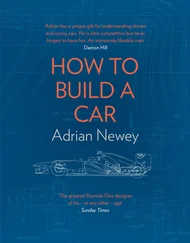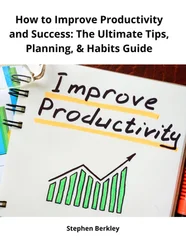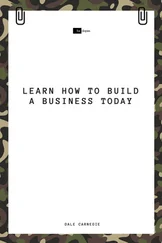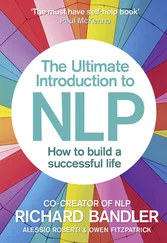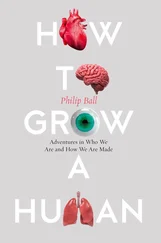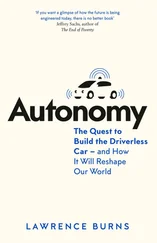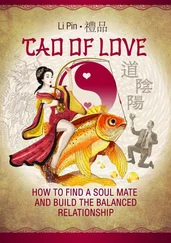Eyal, Nir - Hooked - How to Build Habit-Forming Products
Здесь есть возможность читать онлайн «Eyal, Nir - Hooked - How to Build Habit-Forming Products» весь текст электронной книги совершенно бесплатно (целиком полную версию без сокращений). В некоторых случаях можно слушать аудио, скачать через торрент в формате fb2 и присутствует краткое содержание. Год выпуска: 2014, Издательство: Nir Eyal, Жанр: Старинная литература, на английском языке. Описание произведения, (предисловие) а так же отзывы посетителей доступны на портале библиотеки ЛибКат.
- Название:Hooked: How to Build Habit-Forming Products
- Автор:
- Издательство:Nir Eyal
- Жанр:
- Год:2014
- ISBN:нет данных
- Рейтинг книги:5 / 5. Голосов: 1
-
Избранное:Добавить в избранное
- Отзывы:
-
Ваша оценка:
- 100
- 1
- 2
- 3
- 4
- 5
Hooked: How to Build Habit-Forming Products: краткое содержание, описание и аннотация
Предлагаем к чтению аннотацию, описание, краткое содержание или предисловие (зависит от того, что написал сам автор книги «Hooked: How to Build Habit-Forming Products»). Если вы не нашли необходимую информацию о книге — напишите в комментариях, мы постараемся отыскать её.
Hooked: How to Build Habit-Forming Products — читать онлайн бесплатно полную книгу (весь текст) целиком
Ниже представлен текст книги, разбитый по страницам. Система сохранения места последней прочитанной страницы, позволяет с удобством читать онлайн бесплатно книгу «Hooked: How to Build Habit-Forming Products», без необходимости каждый раз заново искать на чём Вы остановились. Поставьте закладку, и сможете в любой момент перейти на страницу, на которой закончили чтение.
Интервал:
Закладка:
For example, suppose Barbra, a young woman in Pennsylvania, happens to see a photo in her Facebook newsfeed taken by a family member from a rural part of the state. It’s a lovely picture and since she is planning a trip there with her brother Johnny, the external trigger’s call-to-action intrigues her and she clicks. By cycling through successive hooks, users begin to form associations with internal triggers, which attach to existing behaviors and emotions.
When users start to automatically cue their next behavior, the new habit becomes part of their everyday routine. Over time, Barbra associates Facebook with her need for social connection. Chapter two explores external and internal triggers, answering the question of how product designers determine which triggers are most effective.
2. Action
Following the trigger comes the action: the behavior done in anticipation of a reward. The simple action of clicking on the interesting picture in her newsfeed takes Barbra to a website called Pinterest, a “pinboard-style photo-sharing” site. [ix]
This phase of the hook, as described in chapter three, draws upon the art and science of usability design to reveal how products drive specific user actions. Companies leverage two basic pulleys of human behavior to increase the likelihood of an action occurring: the ease of performing an action and the psychological motivation to do it. [x]
Once Barbra completes the simple action of clicking on the photo, she is dazzled by what she sees next.
3. Variable Reward
What distinguishes the Hook Model from a plain vanilla feedback loop is the hook’s ability to create a craving. Feedback loops are all around us, but predictable ones don’t create desire. The unsurprising response of your fridge light turning on when you open the door doesn’t drive you to keep opening it again and again. However, add some variability to the mix — say a different treat magically appears in your fridge every time you open it — and voila, intrigue is created.
Variable rewards are one of the most powerful tools companies implement to hook users; chapter four explains them in further detail. Research shows that levels of the neurotransmitter dopamine surge when the brain is expecting a reward. [xi]Introducing variability multiplies the effect, creating a focused state, which suppresses the areas of the brain associated with judgment and reason while activating the parts associated with wanting and desire. [xii]Although classic examples include slot machines and lotteries, variable rewards are prevalent in many other habit-forming products.
When Barbra lands on Pinterest, not only does she see the image she intended to find, but she is also served a multitude of other glittering objects. The images are related to what she is generally interested in — namely things to see on her upcoming trip to rural Pennsylvania — but there are other things that catch her eye as well. The exciting juxtaposition of relevant and irrelevant, tantalizing and plain, beautiful and common, sets her brain’s dopamine system aflutter with the promise of reward. Now she’s spending more time on Pinterest, hunting for the next wonderful thing to find. Before she knows it, she’s spent 45 minutes scrolling.
Chapter four also explores why some people eventually lose their taste for certain experiences and how variability impacts their retention.
4. Investment
The last phase of the Hook Model is where the user does a bit of work. The investment phase increases the odds that the user will make another pass through the hook cycle in the future. The investment occurs when the user puts something into the product of service such as time, data, effort, social capital, or money.
However, the investment phase isn’t about users opening up their wallets and moving on with their day. Rather, the investment implies an action that improves the service for the next go-around. Inviting friends, stating preferences, building virtual assets, and learning to use new features are all investments users make to improve their experience. These commitments can be leveraged to make the trigger more engaging, the action easier, and the reward more exciting with every pass through the hook cycle. Chapter five delves into how investments encourage users to cycle through successive hooks.
As Barbra enjoys endlessly scrolling through the Pinterest cornucopia, she builds a desire to keep the things that delight her. By collecting items, she’ll be giving the site data about her preferences. Soon she will follow, pin, re-pin, and make other investments, which serve to increase her ties to the site and prime her for future loops through the hook.
A New Superpower
Habit-forming technology is already here, and it is being used to mold our lives. The fact that we have greater access to the web through our various connected devices — smartphones and tablets, televisions, game consoles, and wearable technology — gives companies far greater ability to affect our behavior.
As companies combine their increased connectivity to consumers, with the ability to collect, mine, and process customer data at faster speeds, we are faced with a future where everything becomes potentially more habit-forming. As famed Silicon Valley investor Paul Graham writes, "…unless the forms of technological progress that produced these things are subject to different laws than technological progress in general, the world will get more addictive in the next 40 years than it did in the last 40." [xiii]Chapter six explores this new reality and discusses the morality of manipulation.
Recently, a blog reader emailed me, “If it can’t be used for evil, it’s not a superpower.” He’s right. And under this definition, building habit-forming products is indeed a superpower. If used irresponsibly, bad habits can quickly degenerate into mindless zombie-like addictions.
Did you recognize Barbra and her brother Johnny from the previous example? Zombie film buffs likely did. They are characters from the classic horror flick Night of the Living Dead , a story about people possessed by a mysterious force, which compels their every action. [xiv]
No doubt you’ve noticed the resurgence of the zombie genre over the past several years. Games like Resident Evil , television shows like The Walking Dead , and movies including World War Z , are a testament to the creatures’ growing appeal. But why are zombies suddenly so fascinating? Perhaps technology’s unstoppable progress — ever more pervasive and persuasive — has grabbed us in a fearful malaise at the thought of being involuntarily controlled.
Although the fear is palpable, we are like the heroes in every zombie film — threatened but ultimately more powerful. I have come to learn that habit-forming products can do far more good than harm. “Choice architecture,” as described by famed scholars Thaler, Sunstein, and Balz, offers techniques to influence people’s decisions and affect behavioral outcomes. Ultimately though, the practice should be, “used to help nudge people to make better choices (as judged by themselves).” [xv]Accordingly, this book teaches innovators how to build products to help people do the things they already want to do but, for lack of a solution, don’t do.
Hooked seeks to unleash the tremendous new powers innovators and entrepreneurs have to influence the everyday lives of billions of people. I believe the trinity of access, data, and speed presents unprecedented opportunities to create positive habits. When harnessed correctly, technology can enhance lives through healthful behaviors that improve our relationships, make us smarter, and increase productivity.
The Hook Model explains the rationale behind the design of many successful habit-forming products and services we use daily. Although not exhaustive given the vast amount of academic literature available, the model is intended to be a practical tool (rather than a theoretical one) made for entrepreneurs and innovators who aim to use habits for good. In this book, I have compiled the most relevant research, shared actionable insights, and provided a practical framework designed to increase the innovator’s odds of success.
Читать дальшеИнтервал:
Закладка:
Похожие книги на «Hooked: How to Build Habit-Forming Products»
Представляем Вашему вниманию похожие книги на «Hooked: How to Build Habit-Forming Products» списком для выбора. Мы отобрали схожую по названию и смыслу литературу в надежде предоставить читателям больше вариантов отыскать новые, интересные, ещё непрочитанные произведения.
Обсуждение, отзывы о книге «Hooked: How to Build Habit-Forming Products» и просто собственные мнения читателей. Оставьте ваши комментарии, напишите, что Вы думаете о произведении, его смысле или главных героях. Укажите что конкретно понравилось, а что нет, и почему Вы так считаете.


